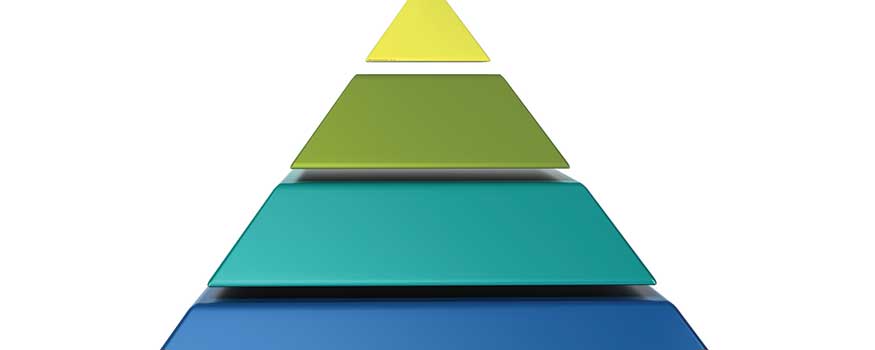If only it were this simple: Nurses get 8 hours of sleep every night, perfect work schedules are in place with all shifts filled by competent staff, and there’s a super pill that eliminates fatigue, burnout, and unprofessional behavior. But simple it’s not; health care is much more complicated.
This month’s edition of American Nurse Today contains valuable reading for you, including articles on fighting the effects of fatigue and more about nurses’ essential role in supporting professionalism with Cup of Coffee conversations, the first tier in the Promoting Professionalism Pyramid. And National Nurses Week celebrations throughout May are shining a spotlight on nursing, so there’s no better time to do a personal gut check about how we look, act, and talk.
Leave Neverland behind
Do you feel tired? Do you know your sleep debt? Are you getting plenty of exercise? At ANA’s 2017 Quality Conference, several speakers addressed fatigue, burnout, and stress, and the impact on professionalism, individual performance, and quality care outcomes. A poster session presenter discussing disruptive behavior used a great analogy when she said, “Sometimes it feels like I’m in Neverland where certain people never grow up!”
The magical world of Neverland is the enchanted island setting for the story of Peter Pan, a boy who refuses to grow up and accept the responsibility that comes with adulthood. Philosophically speaking, the idea of responsibility is innate; we’re responsible for our own actions. Denying responsibility, via the socalled Peter Pan complex, is to deny the inevitable. As professionals, there’s no denying our responsibility.
Top of the pyramid
I’m thinking about another pyramid, in addition to the one featured in our professionalism series; it came to mind while discussing Neverland. It’s ANA’s Model of Professional Nursing Practice Regulation which demonstrates four levels of rules and regulations nurses follow in their practice to achieve safe, quality nursing care. The foundation of the pyramid depicts all of the responsibilities, ethics, scopes of practice, and certifications set forth by the profession. The second level defines federal and state regulations, such as nurse practice acts. The third level is called institutional policies and procedures or, as I define it, organizational regulation. The top level, self determination, addresses the power or ability to make decisions for ourselves. It’s this fourth level where I think we find our greatest opportunity for personal change. Through self-determination, nurses accept responsibility for their own license and decision-making process. I also could argue that it’s where our personal choices and behaviors are made, including appearance, rest, diet, and exercise. ANA has declared 2017 the “Year of the Healthy Nurse,” and the National Nurses Week theme, “Nursing: The Balance of Mind, Body, and Spirit,” invites us to celebrate nurses who lead the charge for health and wellness, starting with ourselves.
Responsibility
So what do professionals, pyramids, and Peter Pan have in common? Responsibility! The pyramids give us simple visual models to help us make clear and informed decisions in a complex world. Nurses accept responsibility at levels Peter Pan could never envision. And the world of nursing is not Neverland, but it is amazing!
References
American Nurses Association. Model of Professional Nursing Practice Regulation. 2006.
Geiger-Brown J, Trinkoff AM. Is it time to pull the plug on 12-hour shifts?: Part 1. The evidence. J Nurs Adm. 2010;40(3):100-2.
Geiger-Brown J, Trinkoff AM. Is it time to pull the plug on 12-hour shifts? Part 3. Harm reduction strategies if keeping 12-hour shifts. J Nurs Adm. 2010;40(9):357-9.
Hickson GB, Moore IN, Pichert JW, et al. Balancing systems and individual accountability in a safety culture. In: Berman S, ed. From Front Office to Front Line: Essential Issues for Health Care Leaders. 2nd ed. Oakbrook Terrace, IL: Joint Commission Resources; 2012: 1-36.
Hickson GB, Pichert JW. Human accountability in the pursuit of quality and safety. Texas Healthcare Trustees: Trustee Bulletin. 2012 Summer; 1-4.
Joint Commission, The. Quick Safety, Issue 24. Bullying has no place in health care. June 2016.
Joint Commission, The. Sentinel Event Alert, Issue 40. Behaviors that undermine a culture of safety. July 9, 2008.
Joint Commission, The. Sentinel Event Alert, Issue 48. Health care worker fatigue and patient safety. December 14, 2011.
Reiter CE, Hickson GB, Pichert JW. Addressing behavior and performance issues that threaten quality and patient safety: What your attorneys want you to know. Prog Pediatr Cardiol. 2012;33(1):37-45.
Rogers AE. The effects of fatigue and sleepiness on nurse performance and patient safety. In: Hughes RG, ed. Patient Safety and Quality: An Evidence-Based Handbook for Nurses. Rockville, MD: Agency for Healthcare Research and Quality; 2008.
Rosenstein AH, Bartholomew K. Physician and nurse engagement: From concept to collaboration. Am Nurse Today. 2016;11(8).
Scott LD, Arslanian-Engoren C, Engoren MC. Association of sleep and fatigue with decision regret among critical care nurses. Am J Crit Care. 2014;23(1):13-23.


















